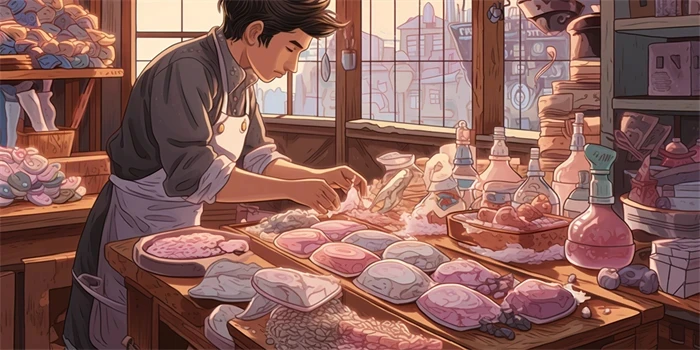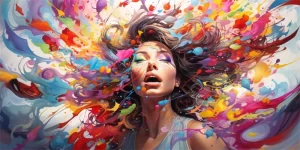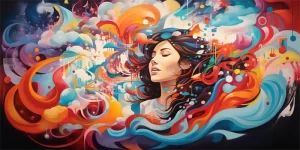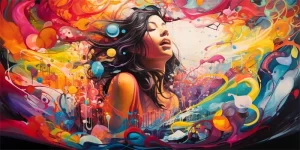Artificial intelligence (AI) has made remarkable advancements in recent years, and one of the most intriguing applications is the generation of AI-powered aging pictures. This technology utilizes deep learning algorithms to predict and depict how someone might look as they grow older. The results can be amusing, thought-provoking, and even uncanny. In this article, we will explore the fun and creative side of AI-generated aging pictures, discussing their applications, popular tools, and potential ethical considerations.

Applications and Benefits of AI-Generated Aging Pictures
1. Social Media Trendsetter:
AI-generated aging pictures have taken social media platforms by storm, with users flocking to popular apps and websites to age their own photos and share the results with friends and followers. This trend provides a lighthearted and entertaining way to engage with AI technology.
2. Self-Reflection and Narrative Building:
Seeing an AI-generated version of ourselves as elderly individuals can trigger introspection and contemplation about the future. It prompts us to consider our own aging process and how our appearance may evolve over time. This self-reflection can be an opportunity for personal growth and self-acceptance.
3. Creative and Artistic Expression:
AI-generated aging pictures can serve as inspiration for artists and photographers looking to explore the theme of aging in their work. By using a combination of AI-generated images and traditional techniques, artists can create unique and thought-provoking pieces that challenge societal perceptions of aging.
4. Entertainment Industry and Character Development:
In the entertainment industry, AI-generated aging pictures have become a tool for character development. Actors and filmmakers can visualize how a character would look in their later years, enhancing the authenticity of storytelling.
Popular AI-Generated Aging Picture Tools
1. FaceApp:
FaceApp is a popular mobile application that offers a wide range of AI-powered image manipulation features, including the ability to generate aging pictures. With its user-friendly interface and realistic results, FaceApp has become the go-to choice for many individuals eager to see their future selves.
2. AgingBooth:
AgingBooth is another well-known application that specializes in creating realistic aging pictures. It uses advanced face detection technology and implements algorithms to accurately predict the effects of aging on facial features. Users can easily upload their photos and witness their virtual transformation.
3. FutureMe:
FutureMe is a website that offers an intriguing twist on AI-generated aging pictures. Instead of simply showing a future version of yourself, it enables users to send messages to their future selves. By combining AI technology with personalized messages, FutureMe adds an emotional and reflective element to the aging process.
Ethical Considerations and Potential Drawbacks
1. Privacy Concerns:
When using AI-generated aging picture apps, users often grant access to their personal photos and data. It is essential to read and understand the privacy policies of these applications to ensure the protection of personal information from potential misuse or unauthorized access.
2. Accuracy and Bias:
While AI algorithms have made significant strides, the accuracy of AI-generated aging predictions may vary. Factors such as image quality, lighting, and facial expressions can affect the reliability of the results. Additionally, biases within training datasets can lead to inaccurate representations, particularly concerning race and gender.
3. Psychological Impact:
For some individuals, viewing an AI-generated version of their aged self can evoke negative emotions or anxiety about the future. It is important to approach these images with a light-hearted mindset and recognize that they are intended for entertainment purposes rather than definitive predictions of one’s appearance.
Frequently Asked Questions
Q: Can AI-generated aging pictures be used for forensic purposes?
A: While AI-generated aging can provide an estimation of facial changes, it should not be considered as a reliable technique for forensic identification. Other factors, such as body features, must be considered in forensic investigations.
Q: Are AI-generated aging pictures suitable for children?
A: The use of AI-generated aging pictures for children raises ethical concerns regarding data privacy. It is advisable to carefully review the terms of service and age restrictions of any application before allowing children to use it.
Q: Can AI-generated aging pictures be reversed?
A: Yes, AI-generated aging pictures are reversible. Apps and websites usually provide an option to revert the edited image to its original form instantly.
References:
[Reference 1: “Analyzing the Privacy Policies of Mobile AI-Powered Apps”]
[Reference 2: “Risks of Bias in AI Facial Recognition Systems”]
[Reference 3: “Exploring the Psychological Effects of AI-Generated Aging Pictures”]


